
The Sea Turtle Grants Program (STGP), funded by the sale of Florida’s “Helping Sea Turtles Survive” specialty license plate, recently awarded $490,892.07 to 30 different projects benefiting Florida sea turtles as part of the 2023-2024 grant funding cycle. Since it’s inception, the Sea Turtle License Plate Grants Program has awarded more than $7 million to conservation projects.
Each year, the Sea Turtle Grants Program distributes money to coastal county governments, educational and research institutions and nonprofit groups through a competitive application process. The sea turtle specialty license plate is also the primary source of funding for the Florida Fish and Wildlife Conservation Commission’s Marine Turtle Protection Program.
The following organizations received grants for their approved projects for the 2023-2024 cycle:
A major threat to sea turtles is the ingestion of or entanglement with marine debris, including single-use balloons. Although many Floridians participate in balloon releases as part of a celebration or to honor a loved one, once balloons are released, they can travel thousands of miles before landing. When a balloon bursts and lands in the ocean, sea turtles and other marine wildlife often consume it because of its resemblance to jellyfish. Sea turtles are unable to regurgitate, so once the balloon enters the digestive tract, it can cause an impaction that can lead to death.
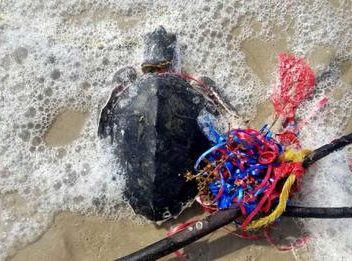
The ribbon attached to balloons also wraps around the flippers or necks of sea turtles, inhibiting breathing, eating or swimming. People who monitor sea turtle nesting around Florida report seeing balloons on nesting beaches on an almost-daily basis. Sea turtle rehabilitation facilities in Florida spend hours removing balloon material and other plastic debris from stranded sea turtles. The Florida Fish and Wildlife Conservation Commission has numerous records of sea turtle deaths associated with balloons.
We are encouraged to see the filing of H.B. 91 – Release of Balloons, which would close a loophole allowing countless balloons to enter our waterways and kill marine life, including sea turtles. Currently, Florida Statute 379.233 prohibits the release of ten or more balloons per day, but makes an exception for “biodegradable” balloons, which is not scientifically sound. By removing these two loopholes, as read in H.B. 91, Florida can drastically reduce plastic debris in the marine environment and save countless marine animals.
All species of sea turtles found in Florida’s coastal and nearshore habitats are listed as either “threatened” or “endangered” under the U.S. Endangered Species Act, meaning that they are at risk of extinction. A number of man-made threats, including coastal development, light pollution, boat strikes, commercial fishing interactions, and plastic pollution are contributing to their decline. While reducing plastic pollution in the ocean as a whole will require systemic change, stopping intentional balloon releases and their debris in the marine environment is achievable through laws such as H.B. 91. By supporting the balloon release ban in Florida in 2023, you can directly improve sea turtle nesting and foraging habitat.
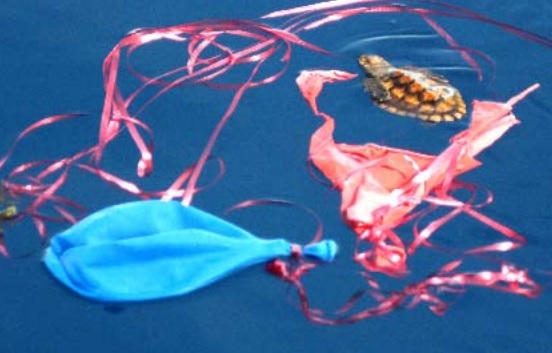
The 2023 Legislative Session begins on March 7 and ends on May 5. To support this legislation, STC encourages Floridians and all sea turtle enthusiasts to contact state House Representatives and Senators and ask them to support H.B. 91, the intentional balloon release ban, when it is scheduled in their committees and up for consideration on the House and Senate floor. While emailing is helpful, directly calling legislators at their district or Tallahassee offices and speaking with their staff is especially impactful. If you are unsure who your legislators are, follow the links below.
Find your Florida Senator: https://www.flsenate.gov/senators/find
Find your Florida House Representative: https://www.myfloridahouse.gov/findyourrepresentative
**NOTE: To purchase tracking bracelets from our official charity partners, please click this link or check out the companies listed on our Partners page here: https://conserveturtles.org/partners**
SCAM ALERT! Companies operating under a variety of names are advertising on Facebook, selling products online, and illegally using STC’s turtle tracking maps as a perk to buyers. If you have been offered an STC tracked turtle by purchasing something from Bela Wonder, Ocean Project.co (not to be confused with ‘The Ocean Project‘), Turtle’s Journey, Wildlife Team, Wildlife Mission, or Ocean Better, they have used Sea Turtle Conservancy’s turtle tracking information without our permission. Don’t be duped or support the scammers!
If you have been scammed, please do NOT email or call STC if you haven’t received your order or if you have questions about your turtle. Unfortunately there is nothing we can do. The greatest inconvenience to STC (aside from having our copyrighted information stolen) is the valuable staff time that is being wasted responding to people’s complaints rather than actually working to protect sea turtles. Instead, we encourage you to report the activity of these companies to the Better Business Bureau, Shopify, and Facebook (contact information below).
How to report scam companies:
File a complaint with the Better Business Bureau: https://www.bbb.org/consumer-complaints/file-a-complaint/get-started
Report online shops to Shopify: https://help.shopify.com/en/questions#/contact/email
Report pages to Facebook: https://www.facebook.com/help/355811251195044
If you ever question the legitimacy of a company who claims to partner with STC, we encourage you to reference the PARTNERS page on our website, which we update regularly.
|
Join STC on an exclusive, guided journey August 3-10, 2023 to experience the warmth of tropical beaches and rainforests in Costa Rica while we explore the wonders of sea turtles. During this short and immersive trip we will spend a few nights working hands-on with green turtles in Tortuguero – nesting site of the largest green turtle colony in the Atlantic and the literal birthplace of sea turtle conservation. You will be guided by world-renowned sea turtle biologist and STC Scientific Director, Dr. Roldán Valverde, a Costa Rican native, who will give presentations on sea turtle research and conservation, as well as rainforest ecology, biodiversity and local “Tico” culture.
This trip will also include a visit to the Arenal volcano, where you will enjoy natural hot springs and other natural attractions around this active volcano region. Click here to see more details and register for the trip through our travel partner, Holbrook Travel.
Highlights
Click here for the FULL ITINERARY!Cost: $3,540 (not including airfare) |
Each year for Giving Tuesday (the Tuesday after Thanksgiving), Sea Turtle Conservancy (STC) targets one of its most pressing sea turtle protection projects as the focus for this annual charitable event. The campaign starts with a pledge from STC’s Board of Directors to match the individual donations provided by STC members and supporters, up to a certain amount. This year’s challenge match from the Board will be $35,000, which means our Giving Tuesday fundraising goal is $70,000 or more.
All funds donated for this year’s Giving Tuesday will be directed toward STC’s turtle research and protection efforts in Tortuguero, Costa Rica—the birthplace of sea turtle conservation. STC’s work in Tortuguero began back in the 1950s, making it the longest-continuous turtle conservation project in the world. Many of the turtle monitoring and protection efforts developed at Tortuguero are used today by sea turtle conservationists around the globe. In fact, many of the world’s leading sea turtle scientists and project leaders got their start as STC Research Assistants in Tortuguero. Most importantly, as a result of STC’s efforts over the last six decades, the green turtle colony that nests at Tortuguero recovered from near the brink of extinction to being one of the two largest green turtle populations in the world.
With all the history and success of this project, STC is concerned knowing that the gains made on behalf of Tortuguero’s green turtles could be in jeopardy for reasons that are poorly understood. Our strategy of systematically reducing threats to sea turtles both on the nesting beach and at sea produced measurable results over the decades. Beginning in the late 1970s, approximately 25 years after conservation efforts started at Tortuguero, the green turtle population began increasing in size. The timing was not a coincidence. Green turtles take at least that long to reach maturity—meaning hatchlings that were protected and released in the 1950s should have started returning to Tortuguero as adults to nest by the end of the 70s. That’s exactly what our data indicates happened.
From the 1960s up to 2012, the number of green turtle nests deposited in Tortuguero grew by over 600%. During high nesting years, it was common to document well over 150,000 nests in a season. The establishment of Tortuguero National Park, the elimination of global sea turtle trade, the banning of turtle and egg consumption at Tortuguero, and the development of sea turtle eco-tourism as an alternative livelihood for the local community all had positive impacts—proving that sea turtle conservation efforts developed by STC worked. Tortuguero green turtles were on the path to full recovery.
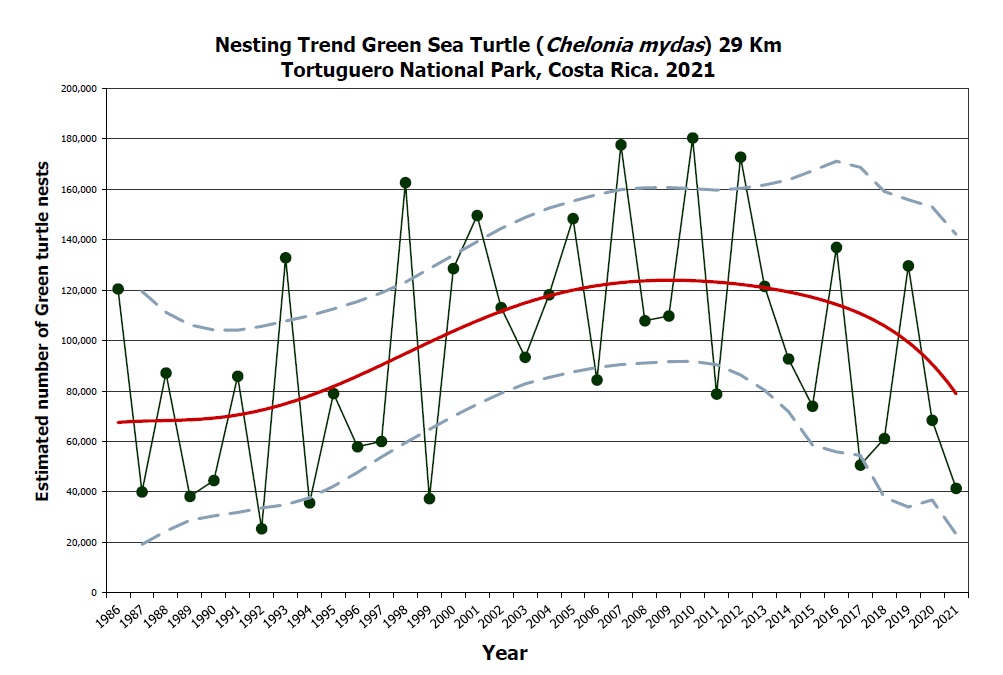
But something unexpected began to happen over the next decade. Starting in 2013, we began documenting a declining trend in nesting. It wasn’t a dramatic drop. In fact, given the phenomenal growth of the population prior to this time period, STC was not particularly worried about a few “down” years of nesting. The factors that cause annual turtle nesting numbers on any beach to ebb and flow still are not well understood. However, our cautious observation of the nesting trend turned into real worry in 2021, when after several down nesting seasons, the number of nests dropped to the lowest level in 25 years (about 40,000 nests for the entire season). This is still a lot of green turtle nests, and it reaffirms Tortuguero’s global importance for this species. Nevertheless, it sparked worry knowing that a little over ten years ago the number of nests hit 180,000 during a single season.
While our preliminary analysis of the 2022 nesting season indicates an encouraging uptick in nesting, the trend over the last decade still has us concerned that something unusual is happening. And that’s bad news for green turtles throughout the Caribbean and Atlantic. With funding raised through this year’s Giving Tuesday campaign, STC will launch important new studies and conservation efforts to help identify and address the threats that have caused the population decline. There probably is not a single “smoking gun.” Rather, it’s more likely that the collective impact of several threats is affecting the population. Our work will focus on identifying new marine foraging sites used by green turtles where they may be experiencing previously-undocumented hunting pressure. We also will work more strategically with the community and natural resource agencies in Tortuguero to curtail illegal hunting of turtles and eggs, which increased dramatically during the pandemic and still remains at an elevated level. It is entirely possible that unforeseen factors related to climate change could be impacting turtle reproduction, so this is another area where our focus will turn.
STC has proven that it has the skill, dedication and tenacity to ensure the long-term survival of sea turtles. We will not allow our decades of success on behalf of sea turtles at Tortuguero to be undone, but we need your help. Please consider making a special donation for this year’s Giving Tuesday (donations will be accepted for this purpose through the end of the year).
Help support STC’s Giving Tuesday Fundraiser by donating in one of three ways:
1. Online at www.conserveturtles.org/GivingTuesday or facebook.com/conserveturtles
2. Call 352-373-6441 with your credit card info
3. Mail a check with “Giving Tuesday” in the subject line. All checks received with “Giving Tuesday” in the subject line will count towards the campaign if received by December 31st.
Research and monitoring of sea turtles in Tortuguero, Costa Rica was initiated in the 1950´s by legendary sea turtle researcher Dr Archie Carr. Dr Carr continued his work in Tortuguero until his passing away in 1987 and the Sea Turtle Conservancy continues to conduct annual programs at the site, making it the longest ongoing sea turtle conservation and monitoring program in the world.
Although there are no strict requirements, good knowledge of English and Spanish, education in biology or related fields, previous fieldwork experience in the tropics, experience working/living in multicultural environments, experience working/living in isolated locations for extended periods, previous experience in environmental education and availability for the entire period of the program greatly improve your chances of being selected for a position.
STC Alumni RAs have gone on to work for conservation organizations, universities and government agencies worldwide.
Applications for RA positions must include the following materials:
1. Application Form for the Leatherback or Green Turtle Program (download below);
2. A cover letter explaining why you are interested in the Research Assistant position, details of any relevant experiences and a statement of your level of proficiency in English and Spanish (either a formal qualification or an indication of your written/oral comprehension);
3. A CV or resume with pertinent information; and
4. Name and email contact of three professional references.
Completed materials should be emailed to Dr. Roldan Valverde at roldan@conserveturtles.org
All application materials must be received at our office before or on the deadline listed for each program. Short-listed candidates will be contacted within four weeks of the application deadline. Please do not phone or e-mail to inquire about the status of your application.
Applicants that do not supply all requested materials will not be considered.
Project description: Conservation and monitoring of critically endangered leatherback turtles
Location: STC Field Station, Tortuguero, Costa Rica
Dates:
Group 1: April 1 – May 10, 2023
Group 2: May 6 – June 30, 2023
Application Deadline: January 15, 2023
Project summary:
Research and monitoring of sea turtles in Tortuguero, Costa Rica was initiated in the 1950´s by legendary sea turtle researcher Dr Archie Carr. Dr Carr continued his work in Tortuguero until his passing away in 1987 and the Sea Turtle Conservancy (STC) still continues the project making it the longest ongoing sea turtle conservation and monitoring program in the world. In 1995, the STC began the Leatherback Program to study the area’s little known Leatherbacks (Dermochelys coriacea). Each year from March – June the STC research team collects information about this vulnerable species. STC works closely with Costa Rican authorities, the Tortuguero community and other leatherback nesting beach monitoring groups. Information collected during the annual Leatherback Program plays a key role in developing effective management strategies for sea turtles in the area.
Work description:
Two research assistants (RAs) will be trained in sea turtle monitoring techniques by, and work under the supervision of, the STC Field Research Coordinator. The RA team will be made up of individuals from several countries from around the world, with an emphasis on Latin America and the Caribbean. Emphasis of the work conducted by RAs will be placed on increasing hatchling production. As such, the RAs main responsibilities will include nest translocation, monitoring and excavation. Track surveys will also be conducted to assess nesting activity.
Leatherback monitoring is carried out along 8 km (=5 miles) of nesting beach. Work activities include conducting morning surveys walking on soft sand and excellent physical condition is a requirement for the RA positions. RAs should expect to work from very early morning hours translocating nests to safe sites.
In addition to monitoring work, RAs are also responsible for working with the STC Education and Outreach Coordinator to develop and participate in various educational and awareness activities in the community of Tortuguero, and be required to assist in the STC Visitor Center to provide information about the work of STC to members of the public.
Leatherback Turtle RA Application 
Leatherback Turtle RA Application (Word doc)
Project description: Conservation and monitoring of critically endangered green turtles
Location: STC Field Station, Tortuguero, Costa Rica
Dates:
Group 1: June 7 – August 20, 2023
Group 2: August 14 – November 1, 2023
These are hard dates and will not be changed. Please do not apply if your availability does not match dates for either group.
Application Deadline: March 13, 2023
Project summary:
Research and monitoring of sea turtles in Tortuguero, Costa Rica was initiated in the 1950´s by legendary sea turtle researcher Dr Archie Carr. Dr Carr continued his work in Tortuguero until his passing away in 1987 and each year from June – November Sea Turtle Conservancy (STC) conducts the Green Turtle Program, continuing the work started by Dr Carr. STC works closely with Costa Rican authorities, the Tortuguero community and other sea turtle conservation organizations in the country. Information collected during the annual Green Turtle Program plays a key role in developing effective management strategies for sea turtles in the area.
Work description:
A total of 16 research assistants (RAs) will be trained in sea turtle monitoring techniques by, and work under the supervision of, the STC Field Coordinators. The season is divided into two time periods, June – August and August – November, with eight RAs in each time period. The RA team will be made up of individuals from several countries from around the world, with emphasis on Latin America and the Caribbean. The primary responsibilities of the RAs will include nightly tagging patrols, morning track surveys, nest monitoring and excavation. RAs are responsible for tagging nesting turtles, collecting biometric data from females, recording nesting activity during track surveys, and other pertinent data collection.
Monitoring activities during the Green Turtle Program are carried out along 8 km (5 miles) of nesting beach. RAs can expect to work very long hours, throughout the day and night, often with little sleep. Beach patrols require walking many kilometers in extremely soft sand and in very extreme weather conditions; therefore an excellent physical condition is a requirement for the RA positions.
RAs are also involved in training short-term paying volunteers in all aspects of the monitoring protocol and supervising volunteer groups during beach patrols. The RAs will also be required to develop and participate in various environmental awareness and educational activities with members of the Tortuguero community, and to assist in the STC Visitor Center to provide information about the work of STC to members of the public.
Green Turtle RA Application 
Green Turtle RA Application (Word doc)
Introducing the winning photos from our 2023 Sea Turtle Calendar Contest! Thank you so much to everyone who entered this year’s contest. It gets harder every year to narrow down hundreds of beautiful images to only 13 photos! Calendars will be for sale in our online gift shop in late November or early December. We will post the link once they’re live!
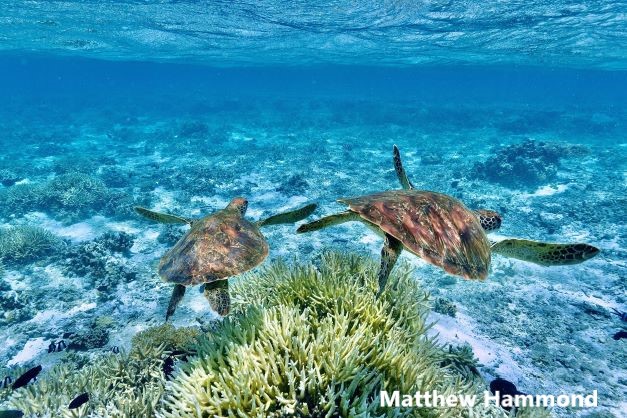
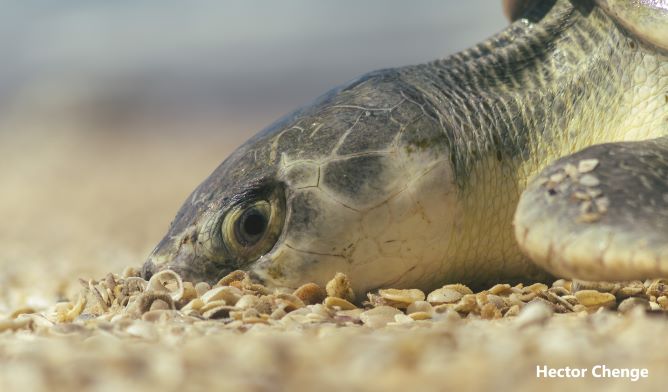

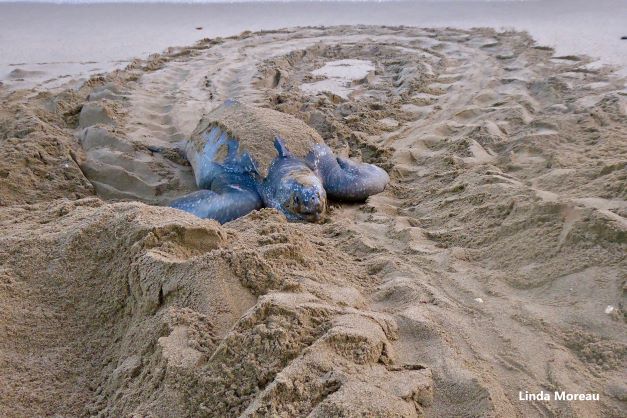
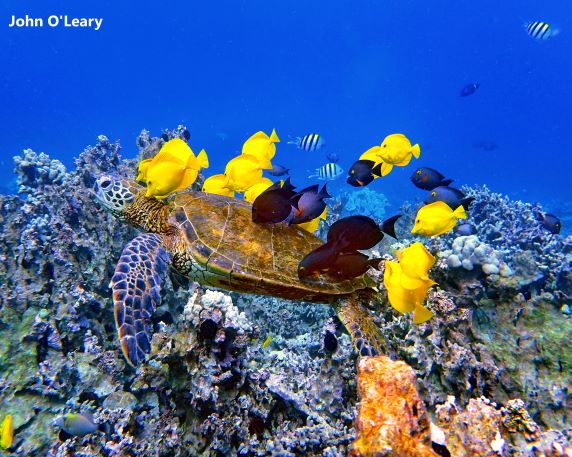
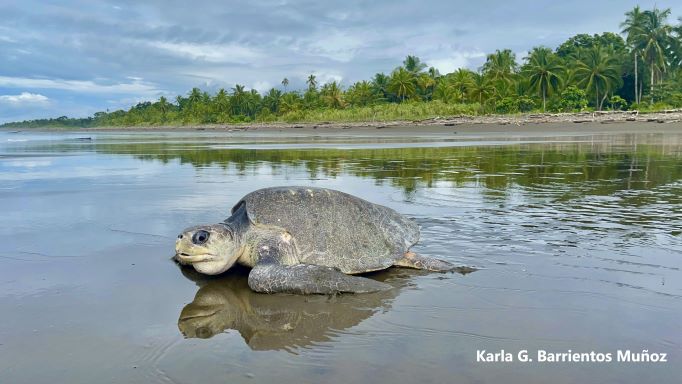
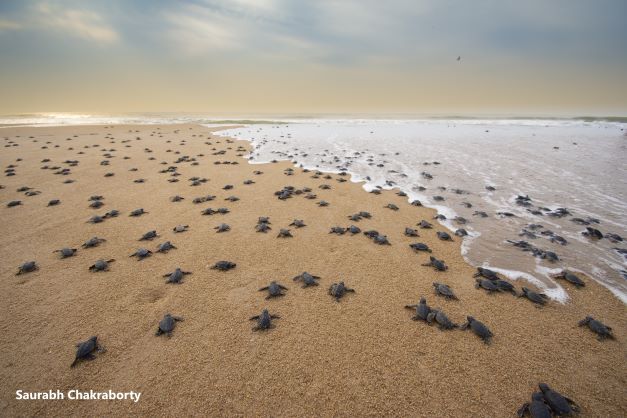
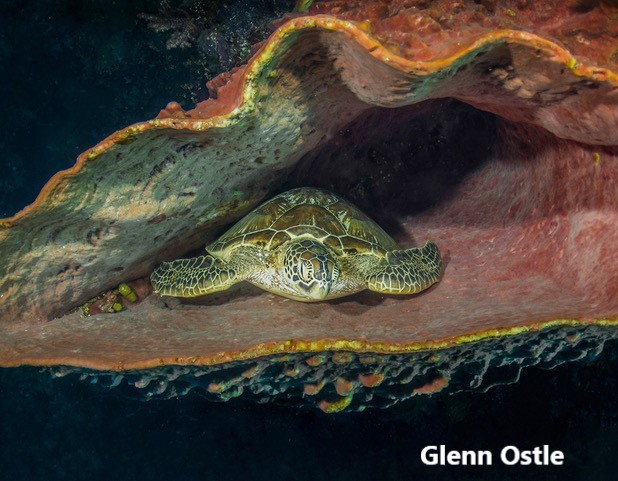
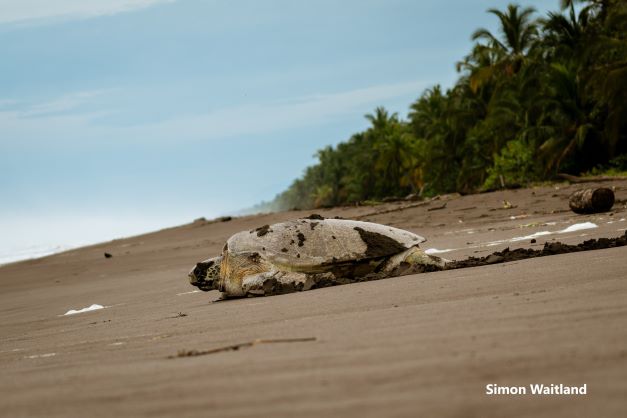
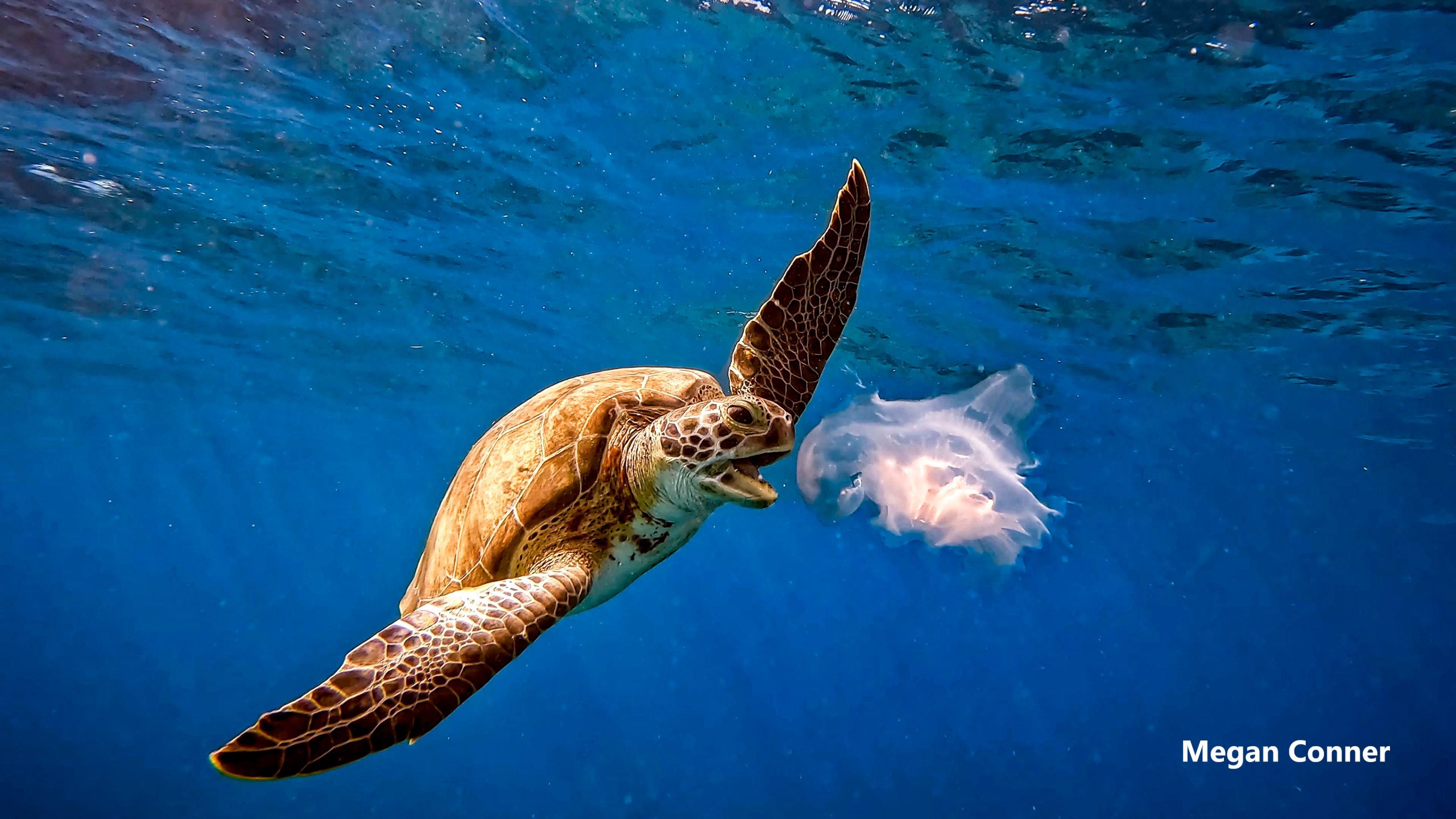
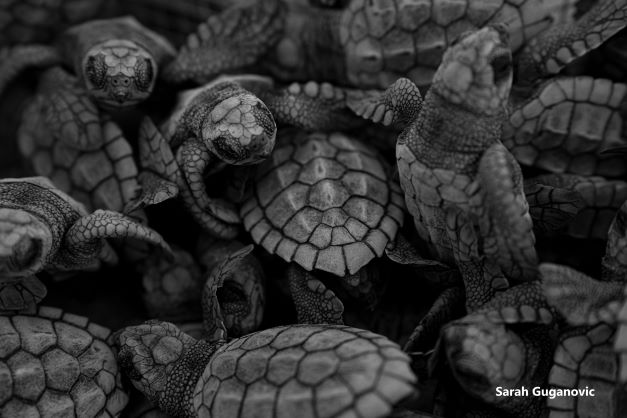
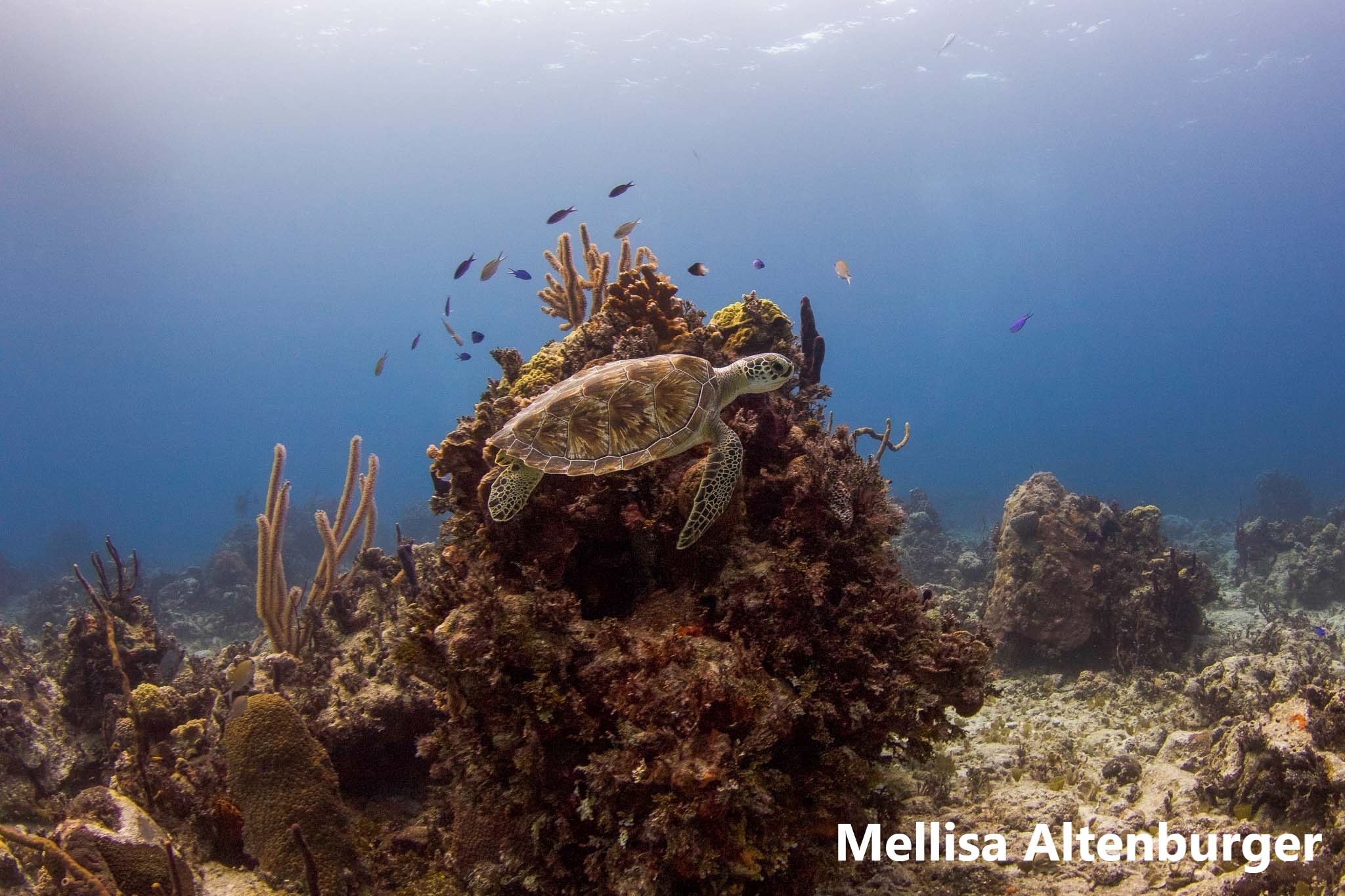

January 18 – February 15, 2023
Instructors: Sarah Rhodes-Ondi, Sea Turtle Conservancy and Amanda Thompson, The Nature Conservancy
 Are you a nature guide, conservation professional or volunteer interested in honing interpretive communication skills? The Sea Turtle Conservancy at the Archie Carr Refuge, in partnership with the National Association for Interpretation (NAI) and The Nature Conservancy, is offering a Virtual Certified Interpretive Guide Course Jan. 18th thru Feb. 15th. Attendance at 8 online classes is necessary for certification.
Are you a nature guide, conservation professional or volunteer interested in honing interpretive communication skills? The Sea Turtle Conservancy at the Archie Carr Refuge, in partnership with the National Association for Interpretation (NAI) and The Nature Conservancy, is offering a Virtual Certified Interpretive Guide Course Jan. 18th thru Feb. 15th. Attendance at 8 online classes is necessary for certification.For more information and to register for the course, click here!
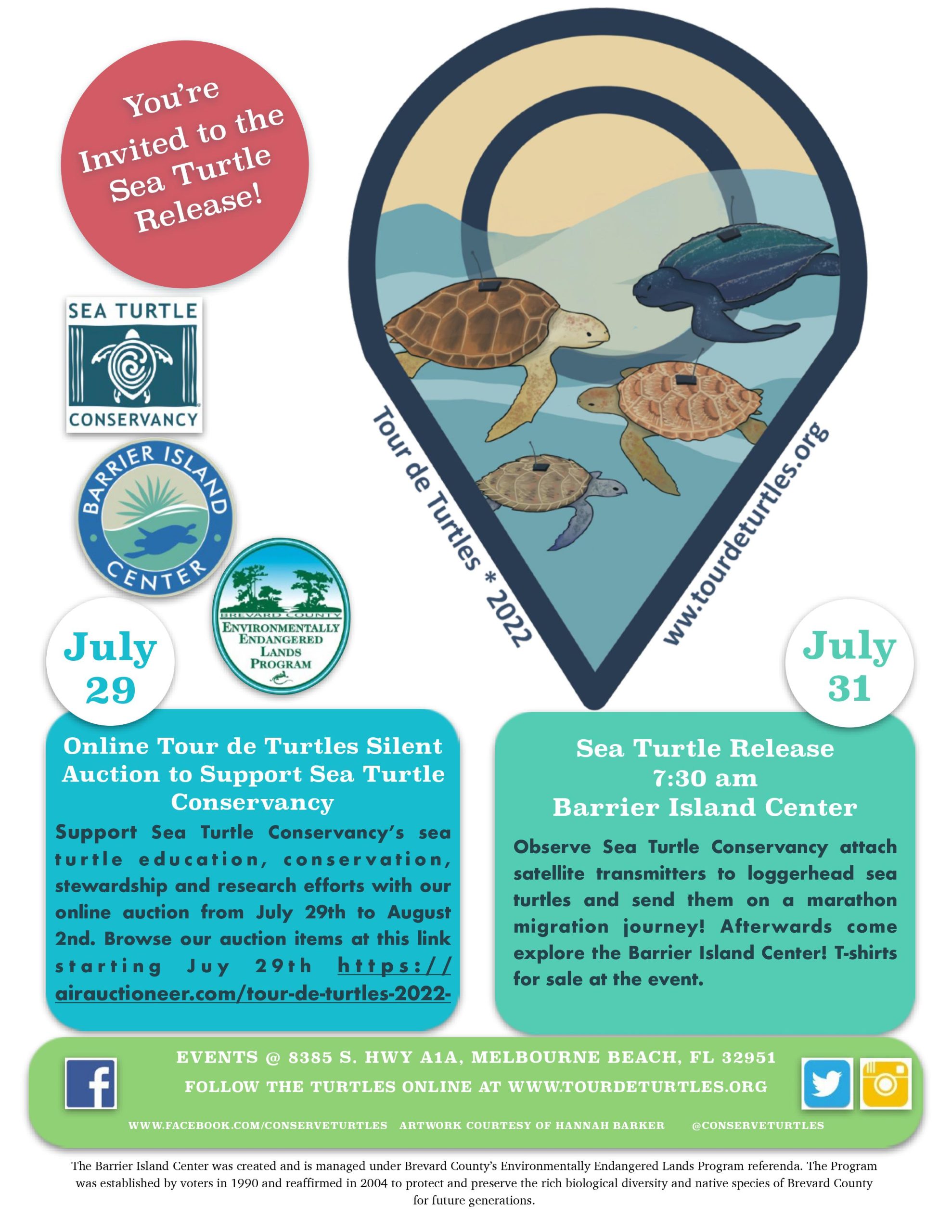
The Lisa Jo Randgaard Fund
Unrestricted endowment funding to meet the complex challenges of a changing world
Written by Linda Randgaard Antonioli (Lisa’s sister)
***********************************************************************************************
This year marks a decade since we lost Lisa, and she remains at the heart of all we do for the Sea Turtle Conservancy (STC).
 Lisa came into the world in Naperville, IL, on August 17, 1968. A serious heart condition, later diagnosed as severe tetralogy of fallot, necessitated her immediate transfer to Children’s Memorial Hospital (now Lurie Children’s) in downtown Chicago. The Democratic Convention began there nine days later, and chaotic demonstrations erupted on the streets. Mom recalled vividly the smell of tear gas and protestors pounding on the car as she drove to get to Lisa’s bedside. It was a most colorful start for our brave sister, our family’s youngest.
Lisa came into the world in Naperville, IL, on August 17, 1968. A serious heart condition, later diagnosed as severe tetralogy of fallot, necessitated her immediate transfer to Children’s Memorial Hospital (now Lurie Children’s) in downtown Chicago. The Democratic Convention began there nine days later, and chaotic demonstrations erupted on the streets. Mom recalled vividly the smell of tear gas and protestors pounding on the car as she drove to get to Lisa’s bedside. It was a most colorful start for our brave sister, our family’s youngest.
 The challenges of living with a chronic pediatric disease so rare that adult medicine was ill-equipped to treat it required Lisa to receive care and surgical support from pediatric physicians throughout her lifetime. Florida’s climate was far gentler on Lisa’s health than Minnesota, where we grew up; she moved to Ft. Lauderdale in the 1990s and ultimately relocated to Ft. Myers, where she put down roots. There, Lisa became acquainted with STC, and a passion for sea turtles began. It brought her great joy to support STC, and to track sea turtles online through Tour de Turtles events. Even as her health started to decline, Lisa’s beautiful soul, sharp wit, humble nature, adventurous spirit, great love for animals, and generous heart never dimmed.
The challenges of living with a chronic pediatric disease so rare that adult medicine was ill-equipped to treat it required Lisa to receive care and surgical support from pediatric physicians throughout her lifetime. Florida’s climate was far gentler on Lisa’s health than Minnesota, where we grew up; she moved to Ft. Lauderdale in the 1990s and ultimately relocated to Ft. Myers, where she put down roots. There, Lisa became acquainted with STC, and a passion for sea turtles began. It brought her great joy to support STC, and to track sea turtles online through Tour de Turtles events. Even as her health started to decline, Lisa’s beautiful soul, sharp wit, humble nature, adventurous spirit, great love for animals, and generous heart never dimmed.
With the support of Executive Director David Godfrey, the Lisa Jo Randgaard Fund was established by her family after Lisa’s sudden passing from complications of her disease at the age of 43 on May 2, 2012. This is the first endowment fund created by donors, which, we know, would make Lisa very proud. There are many kind and generous people in the STC Community that support our fundraising and each of them has our enduring gratitude.
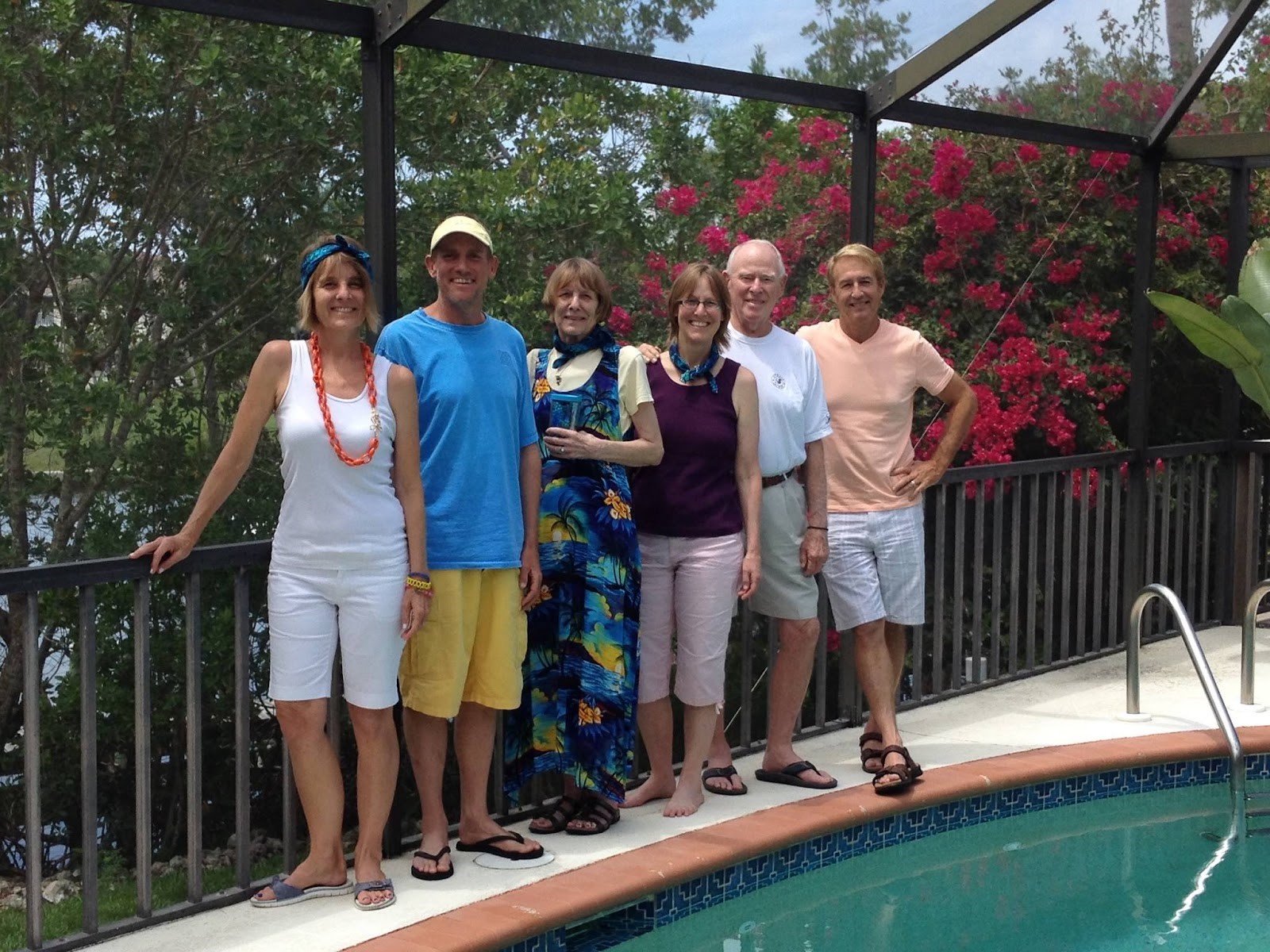
Linda, Tom, Jenny, Diane, Jerry, & Kenny
As we mentioned, this year marks a decade since we lost Lisa, and she remains at the heart of all we do for STC. Some of our achievements over the last decade include:
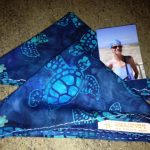
 Since 2015, fundraising centers on Flippery When Wet artisan soaps, Diane’s handmade sea-turtle stamped bars. To date, 2,411 soaps have shipped to 31 states and two Canadian provinces. To learn more and to order, please visit LoveIntoSustainedAction.com.
Since 2015, fundraising centers on Flippery When Wet artisan soaps, Diane’s handmade sea-turtle stamped bars. To date, 2,411 soaps have shipped to 31 states and two Canadian provinces. To learn more and to order, please visit LoveIntoSustainedAction.com. Funded by a portion of revenues from Florida’s Sea Turtle Specialty License Plate, the Sea Turtle Grants Program distributes funds each year to support sea turtle research, conservation and education programs that benefit Florida sea turtles. In 2022, Sea Turtle Conservancy had three project proposals selected for funding.
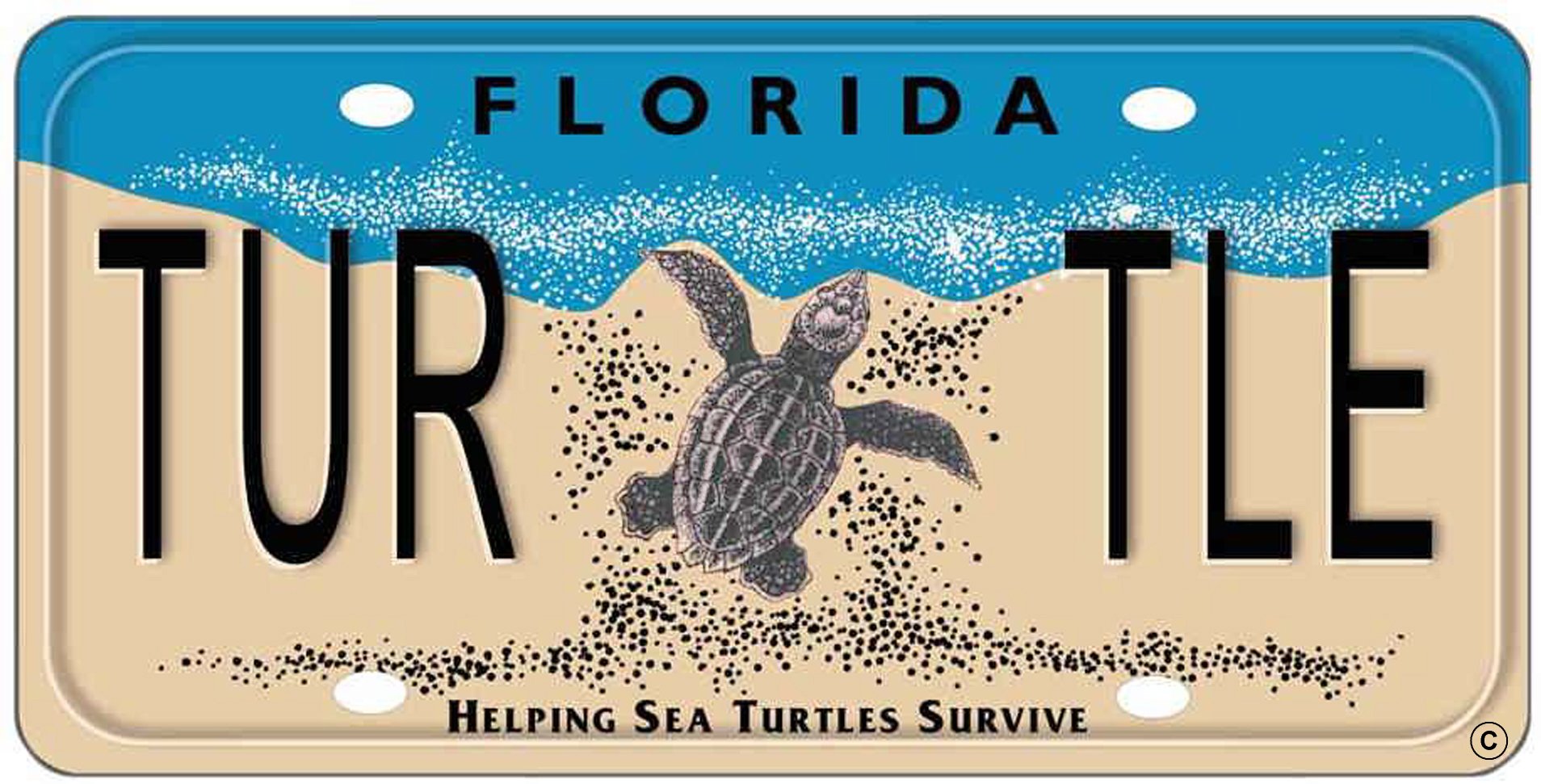
2022
Seasonal Movements of Immature Kemp’s Ridley Turtles in a Warming Gulf of Mexico – $21,625.00 awarded
The Big Bend appears to play a significant role as a developmental habitat for immature and mature Kemp’s ridleys. In 2018, Sea Turtle Conservancy (STC), in collaboration with the USGS Florida Cooperative Fish and Wildlife Research Unit at the University of Florida, began conducting sea turtle research in this region and has encountered dozens of sites containing Kemp’s ridleys. Until recently there was strong evidence that Kemp’s ridleys were recovering based on nesting numbers, but recent counts have been erratic and it is unclear if the nesting population has stabilized or is in decline. In the northeastern Gulf of Mexico, Kemp’s ridleys have previously shown site fidelity to near shore areas during the warmer months, but display southerly migrations in the winter as sea surface temperatures decrease to between 18 and 22? C. However, this research was conducted several decades ago and recent warming trends in the Gulf of Mexico may be altering these migratory patterns. Understanding the distribution and habitat requirements of endangered species is one of the keys to managing their recovery. Endangered immature Kemp’s ridley turtles recruit to shallow bays and estuaries in Florida’s Big Bend region, yet very little research has been conducted to look at the possible impacts of climate change on the movements and habitat use of these turtles. The purpose of this study is to identify potential seasonal shifts in movement and diet of immature Kemp’s ridley turtles in response to changes in sea surface temperatures over the past two decades.
Sea Turtle Academy STEM: Empowering Students to Build Solutions to Sea Turtle Threats – $12,652.00 awarded
The Barrier Island Sanctuary Management and Education Center (BIC), located in the heart of the Archie Carr National Wildlife Refuge, has a responsibility to train the next generation of stewards of sea turtles and their critical nesting habitat. Sea Turtle Academy (STA) field study education programs have reached up to 3,000 students in both Brevard and Indian River Counties. There is strong demand from Title I, private and charter schools for the STA program, however, many schools lack the bus funds to attend. This project will fund bus transportation for these students. The STA program also includes a follow-up outreach program option for classes. In response to the Science and Engineering framework and cross-cutting concepts in the Next Generation Sunshine State Standards, the BIC team will create an integrated STEM (Science, Technology, Engineering and Math) outreach program that encourages students to think critically about sea turtle threats, collaborate, problem solve and build solutions to these threats. The threats sea turtles face can be sad and overwhelming to young children. However, by focusing on solutions minded thinking, the BIC team aims to empower the next generation of stewards of the Carr Refuge to not only be informed of threats sea turtles face but to also build solutions to save sea turtles from disorientation on nesting beaches, boat strikes, incidental takes by fisheries and predators on nesting beaches.
Body Condition, Blood Analytes and Diet of Juvenile Green Turtles in Florida’s Big Bend – $14,313.00 awarded
The Big Bend is a large area in the northeastern Gulf of Mexico that has a relatively low amount of coastal development and large wildlife refuges. However, there are already signs that this relatively pristine environment may be changing. Seagrass and oyster reefs have been steadily declining in the Big Bend and plans to build a freeway through the region will only increase development pressure. There is a growing need for comprehensive health checks and physiological studies on wild caught sea turtles to establish baseline values and determine their resilience in the face of deteriorating marine environments. STC, in collaboration with the University of Florida’s USGS Cooperative Fish and Wildlife Research Unit, has been conducting surveys and capturing sea turtles in the Big Bend since 2018 and has encountered multiple hotspots containing juvenile and sub-adult green turtles. This project will collect baseline sea turtle health and diet data that will be become valuable for future spatial and temporal comparisons. Baseline blood chemistry data are also extremely useful as a reference in the medical management of sea turtles under veterinary care. The health and diet results will be used to compare with the health and diet of juvenile green turtles at other developmental sites in and around Florida, as well as at sites known to have turtles with genetic ties to Florida’s nesting beaches, such as Bermuda and others throughout the Caribbean. We expect the results will help wildlife managers make informed decisions and help STC educate visitors and residents about the importance of the Big Bend to sea turtles.
To learn more about the Sea Turtle Grants program, visit www.helpingseaturtles.org.

The Sea Turtle Grants Program (STGP), funded by the sale of Florida’s “Helping Sea Turtles Survive” specialty license plate, recently awarded $445,550.59 to 26 different projects benefiting Florida sea turtles as part of the 2022-2023 grant funding cycle. Since it’s inception, the Sea Turtle License Plate Grants Program has awarded more than $7 million to conservation projects.
Each year, the Sea Turtle Grants Program distributes money to coastal county governments, educational and research institutions and nonprofit groups through a competitive application process. The sea turtle specialty license plate is also the primary source of funding for the Florida Fish and Wildlife Conservation Commission’s Marine Turtle Protection Program.
The following organizations received grants for their approved projects for the 2021-2022 cycle:
Florida’s sea turtles face a number of threats to their survival – coastal development, poor water quality, ingestion of marine debris, and artificial lighting – but they also have a lot of people in their corner that fight to protect them. Among these people are coastal code enforcement officers who survey the lighting on beachfront properties during sea turtle nesting season and work with coastal property owners to comply with their local ordinances. Because the State of Florida leaves it up to individual counties and municipalities to adopt and enforce their own sea turtle lighting ordinances, local government officials are on the front lines of protecting their local sea turtle populations from disorientation by poorly managed lights.
This task is not for the faint of heart. Although sea turtle nesting season occurs mostly during the summer months, code enforcement officers spend the winter preparing their communities for nesting season by sending out reminders to turn off lights or use sea turtle friendly lighting, compiling violation data, conducting pre-season lighting surveys, and tending to other code enforcement-related responsibilities that don’t involve their sea turtle lighting ordinances. In addition, a code enforcement officer’s coastal territory often covers several miles and dozens of coastal properties – all with potentially problematic lighting that needs to be addressed. Some officers utilize off-road vehicles at night to cover the extensive stretches of beach, while others conduct their lighting surveys by foot.
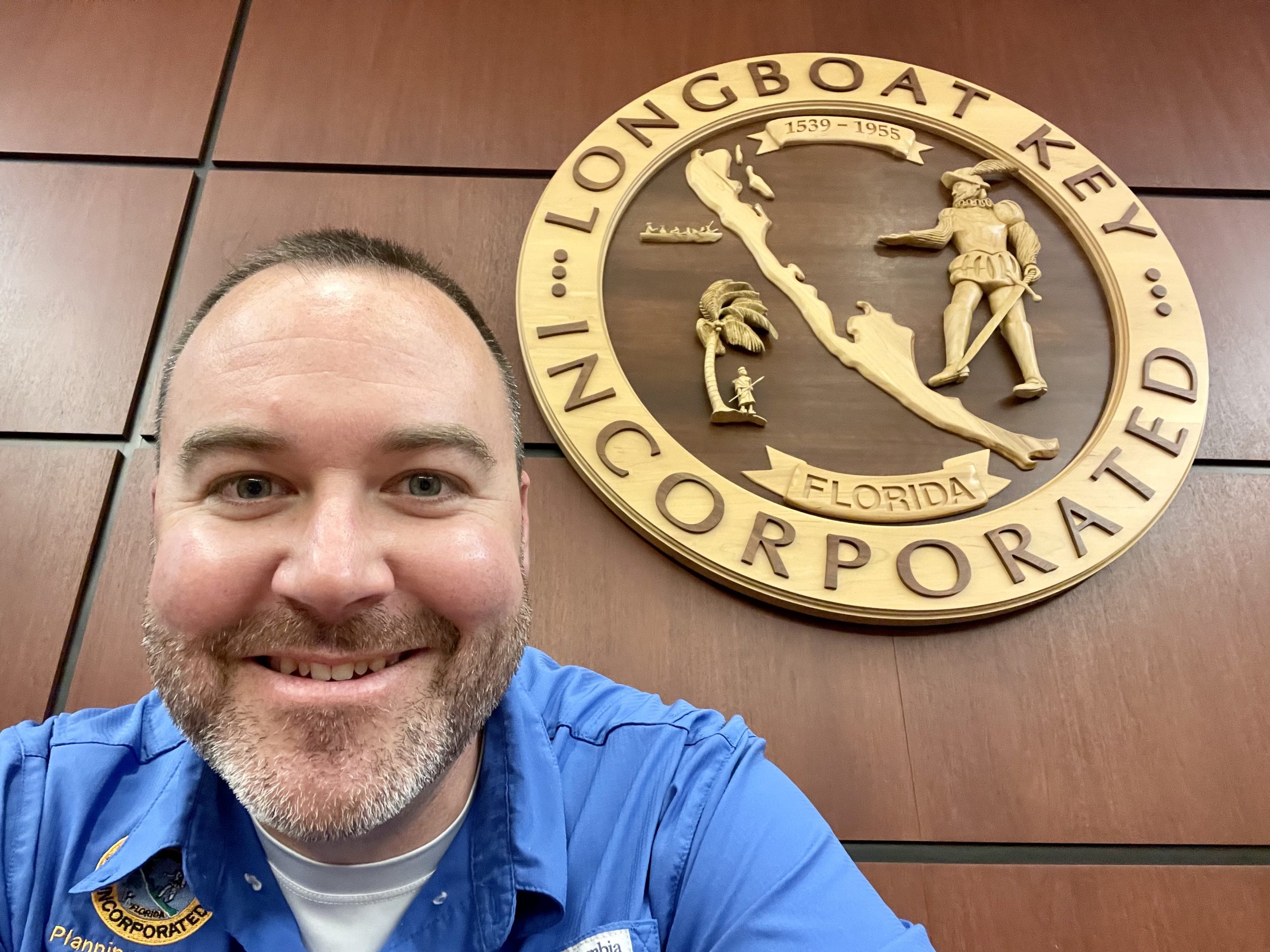
Chris Kopp, the only code enforcement officer for the Town of Longboat Key, prefers the latter method. His survey area is 11 miles long and hosts the second-highest number of disorientations in Florida. He recently spearheaded the effort to update the Town’s sea turtle lighting ordinance to reflect the Florida Department of Environmental Protection’s new Model Lighting Ordinance and regularly assists code enforcement officers across the state with doing the same. Below, we talk with Chris about how he manages his time as a department of one, his enforcement style, and his favorite sea turtle experience.
What is your education and career background?
I am Florida born and raised. I have over 20 years of combined military, law enforcement, and code enforcement experience. I served two tours on active duty in the U.S. Marine Corps. In 2007, I began my enforcement career with the Margate Police Department in Florida, before transferring to the Charlotte-Mecklenburg Police Department in North Carolina. In 2019, I turned my part time gig of teaching active shooter survival into a full-time business with Lockdown International. In 2020, I returned to Florida as the Code Enforcement Officer for the Town of Longboat Key. I hold a Master’s Degree in Criminal Justice Administration and several advanced certifications in the enforcement fields.
How did you end up as a code enforcement officer on Longboat Key?
I was looking for a career opportunity which allowed me to use my professional experience and desire to work with the community in public service. The Town of Longboat Key was always a beautiful place to visit during family vacations. Longboat Key gives you that small town feel with big cities amenities all around. Code Enforcement on Longboat Key checked all those boxes for me and my family.
What role do you play as code enforcement during sea turtle nesting season?
The Code Enforcement Division handles every aspect of sea turtle protection during nesting season. We write the ordinance, present ordinance changes to the Town Commission, educate the public on the ordinance, inspect properties for compliance, work toward voluntary compliance with property owners, issue citations, and even take property owners to a Special Magistrate Hearing. A lot of our work happens outside of sea turtle nesting season. Citations and Magistrate Hearings are always a tool for enforcement, but don’t always produce the best long-term results. If we can properly educate and prepare the community prior to the nesting season, then our violations tend to decrease. Our goal is to educate the community on why the rules exist, and work with violators to gain full compliance for the safety of sea turtles.
As you often say, you are a department of one. How do you manage all of the responsibilities of an entire department, especially during the height of nesting season?
Time management and community involvement are crucial in this position no matter the size of the department. However, I am not alone during the nesting season. Longboat Key Turtle Watch has a wonderful team of volunteers assisting our local FWC permit holder, Mote Marine Laboratory, with the daily morning monitoring of turtle nests. These volunteers provide outstanding communication about potential lighting and obstruction violations they observe. I also receive every FWC Marine Turtle Disorientation Report within 24 hours. All this information helps me focus my time in the needed hot spots.
What was the impetus for Longboat Key’s ordinance update and what was the process like?
There were a number of driving factors which caused the Town to update our Marine Turtle Protection Ordinance, with the biggest factor being our number of disorientations. It pains me to say that our Town has had the second highest number of disorientations in the entire state for years. We are not proud of this, and we are striving to change it. Other factors included the advancements in sea turtles research, the advancements in lighting technology, our increasing population, and other minor verbiage changes long overdue. The process was not as simple as making a couple of changes and applying the ceremonial rubber stamp. Each word in the ordinance can potentially affect sea turtles, our citizens, and other community stakeholders. We were calculated in our changes to ensure it was in everyone’s best interest. We had long discussions with our residents, our businesses, attorneys, lighting experts, window manufactures, tinting engineers, and our partners in sea turtle protection, including the Sea Turtle Conservancy. We wanted to get the entire community involved in creating an effective ordinance. It was an eight-month process, and we are proud of our final product.
How do you approach enforcing Longboat Key’s ordinance?
Voluntary compliance is the goal for every code enforcement officer. Once a violation is observed, we attempt to make an in-person or over-the-phone meeting. Many property owners in violation don’t know they are violating an ordinance. We want to educate them on the ordinance, how they are violating it, and how to come into compliance. This method also provides a much quicker compliance rate then using snail mail. The type of violation (i.e. lighting, furniture left on the beach, etc.) will determine our enforcement options. Items left on the beach can be tagged for removal or impounded. Citations can be written for each day a violation exists. A Notice of Code Violation letter may be mailed to the property owner which starts a legal process toward a Special Magistrate Hearing. A Magistrate can then access fines in the form of liens. We have used all methods to enforce our Marine Turtle Protection Ordinance.
What has been your most challenging sea turtle lighting case or violation that you’ve handled?
We have a repeat offender who continues to have lighting violations. The property is a short-term rental, owned by an out-of-state company. Zero communication from the company. We observe a violation, inform the renters about the ordinance, and then a week later a new renter arrives. We then observe another violation, inform the new renter about the ordinance, and you get the picture. We have issued numerous citations and have an active lien on the property. Not all violations have a success story. The other 99% of my interactions have positive, successful endings.
What do you think is the best part of your job?
The community. Community services was my specialty during my time in law enforcement. It is what I enjoy most – the interaction with everyone. No one wants to see the Code Enforcement Officer at their door or receive a violation in the mail. I understand my job from their perspective. I try to provide each person with some education, a smile, and some light humor.
Tell me about a meaningful sea turtle experience you’ve had.
Watching a massive sea turtle lay eggs or hatchlings exploding out of the nest like a bag of Jiffy Pop is just really cool to see. I am fortunate to see these things happen during nighttime inspections. I was able to rescue a couple of hatchlings trapped in the vegetation roots and being eaten by ants. The hatchlings were rehabilitated by Mote Marine Laboratory and released. It puts into perspective the “why” for me and my job responsibilities.
What advice do you have for code enforcement officers in coastal counties who want to implement lighting ordinance updates?
Your abilities as a Code Enforcement Officer are only as good as your ordinance is enforceable. Your ordinance needs to stay current with sea turtle research, lighting technology, and recommendations by our partners at the state level. The Model Lighting Ordinance was released as Florida Administrative Code 62B-55 on December 17, 2020. Does your ordinance reflect their recommendations? If not, then it’s time to update your ordinance. We are a brotherhood and sisterhood in the fight together. I’ve assisted other jurisdictions with updating their ordinances. Let me be a resource for you. My email is ckopp@longboatkey.org.
Written by Janet Nupp Hochella, long-time STC member and BIC volunteer. The 30 plus years of efforts on behalf of turtles earned Janet the prestigious Ed Drane Award for Volunteerism at the 2017 International Sea Turtle Society Symposium. Janet now resides in Melbourne, Florida where she can continue to pursue her passion – sea turtles!
—————————————————————————————————————–
From the first year that Guided Sea Turtle Walks were conducted at the Barrier Island Center, I have navigated the dark sandy beach at Bonsteel Park in hopes of finding a nesting loggerhead sea turtle for the guests, young and old, who have assembled from all parts of the state or the country. As a sea turtle walk scout, I never tire from the excitement of meeting new people. But more gratifying is finding a nesting loggerhead sea turtle to show the guests, most who have never seen a sea turtle in the wild, and to share in the guests’ enthusiasm and appreciation of this special reptile.
Guided Sea Turtle Walks offer a unique educational and outreach opportunity for participants. But sometimes, there is an added bonus. The loggerhead sea turtle that the Friday night scouting crew found on their first walk night of the 2021 season on June 4th was a very special sea turtle!
Early into the scouting, while the guests were listening to the educational slide presentation, Turtle South came upon a nesting loggerhead. Scott Beazley and Brandon Garrett radioed to Turtle North, Jenna Coven and me, that they had a small loggerhead digging her egg chamber which would be a good candidate to show the guests. The turtle was not far south of the Bonsteel ramp where the guests access the beach. The Lead, Cindy Pless, was notified and the guests were gathered to get to the beach and to the turtle in time to see the turtle dropping eggs into her egg chamber. This was a small turtle and she was moving right along, but the guests got there in time to see the egg laying process. Always interested in determining whether an observed turtle might have been encountered by the UCF Marine Turtle Research Group and under the FWC permit guidelines, I requested that we check, after the turtle finished camouflaging her nest, for tags – metal tags on one of the scutes of the inner edge of both the left and the right flippers, and most importantly, for a PIT (Passive Integrated Transponder) tag which could be located in any one of the four flippers. Most importantly because the sea turtle can “lose” the metal tags, but the internal tag is usually permanent and can be read with a PIT tag scanner.
Without the use of any light, Scott and I checked for the metal tags. There was none on the left front flipper…but, bingo, there was a flipper tag on the right front flipper! Because I also volunteer with the UCF MTRG and am permitted to check for tags, I grabbed my PIT tag scanner and immediately got a reading from the right front flipper. Finding a PIT tag is always exciting as it reveals there is a history with the turtle. This PIT tag was not in a series that I recognized so finding out the source of the PIT tag would be very intriguing and important. With only the use of the red headlamp to read the flipper tag and the PIT tag, I asked one of the scouts to copy the number to a clipboard that the Lead carries so that I could investigate the source of the tag numbers.
Upon checking with the University of Central Florida Marine Turtle Research Group who monitor and conduct sea turtle research on the Archie Carr National Wildlife Refuge, I was informed that this turtle most definitely had a history. Not only was the turtle seen on the Archie Carr National Refuge by the UCF researchers almost 18 years prior, she was originally encountered by a NOAA group in Florida Bay 21 years ago. I would need to contact Barbara Schroeder, National Sea Turtle Coordinator of NOAA-NMFS, for the particulars.
After several attempts through various channels, I was able to connect with Barbara Schroeder. I was thrilled to learn that the turtle we encountered was one that Barbara Schroeder herself has researched and documented over many years as part of the FFWCC/NOAA Florida Bay Sea Turtle Project.
(Photos courtesy of Barbara Schroeder, FWC/NOAA Sea Turtle Bay Project)
This small loggerhead has quite a backstory! Barbara Schroeder writes in an email “this turtle was first captured by us in Florida Bay in 2000, she was an adult then (you can see her length has not changed). In March 2013 we satellite tagged this turtle after ultrasound revealed she was preparing to breed that summer and she was seen nesting at ACNWR in June 2013 and of course her satellite tag data showed us the same. We named her “Shiver” as it was very cold in March 2013 when we captured her.” Summary records that Barbara Schroeder sent along in the email show that the turtle has been recorded as seen nesting on the Archie Carr National Wildlife Refuge in 2016, 2018, and now in 2021.
Shiver is a special turtle study with her history of being recaptured multiple times in Florida Bay and on the Archie Carr Refuge in multiple years. Shiver gained celebrity status with her own write up in Blair E. Witherington’s book Our Sea Turtles published by Pineapple Press in 2015. Dr. Witherington used Shiver’s data, provided by the FFWCC/NOAA Florida Bay Sea Turtle Project, to exemplify the reproductive migrations of sea turtles. In his book on page 123, Witherington writes “To track her movements over her upcoming nesting season, the researchers attached a satellite transmitter to Shiver’s carapace. Her broadcasts indicated that she left Florida Bay to enter the Atlantic in mid-April and moved along the Florida coast to the Archie Carr National Wildlife Refuge, covering the roughly 250 miles (400 km) trip in about two weeks. Shiver lingered off the refuge and deposited several clutches over an 11-week period. Not long after her last nest, Shiver set off for home, nearly reaching her home waters of Florida Bay after a three-week swim.” The photo to to the right, taken from the book, shows a photo of Shiver and her migratory path in 2013.
years. Shiver gained celebrity status with her own write up in Blair E. Witherington’s book Our Sea Turtles published by Pineapple Press in 2015. Dr. Witherington used Shiver’s data, provided by the FFWCC/NOAA Florida Bay Sea Turtle Project, to exemplify the reproductive migrations of sea turtles. In his book on page 123, Witherington writes “To track her movements over her upcoming nesting season, the researchers attached a satellite transmitter to Shiver’s carapace. Her broadcasts indicated that she left Florida Bay to enter the Atlantic in mid-April and moved along the Florida coast to the Archie Carr National Wildlife Refuge, covering the roughly 250 miles (400 km) trip in about two weeks. Shiver lingered off the refuge and deposited several clutches over an 11-week period. Not long after her last nest, Shiver set off for home, nearly reaching her home waters of Florida Bay after a three-week swim.” The photo to to the right, taken from the book, shows a photo of Shiver and her migratory path in 2013.
As sea turtles generally nest every two years, Shiver probably won’t be encountered on her nesting beach this year. Finding her again in the 2023 Sea Turtle Nesting Season would truly be a stroke of luck with the hundreds of loggerheads that nest multiple times every season on the Archie Carr National Wildlife Refuge. But the Sea Turtle Conservancy Barrier Island Center Sea Turtle Scouts will be out there again this 2022 season. Who knows what sea turtle we will encounter on our guided sea turtle walk night. All of the sea turtles are special! Like Shiver!
Further information on Referenced Organizations:
Archie Carr National Wildlife Refuge – https://conserveturtles.org/archie-carr-national-wildlife-refuge-refuge-sea-turtles/
FWC – https://myfwc.com/research/wildlife/sea-turtles/research/fl-bay-population-study/
NOAA – https://www.fisheries.noaa.gov/sea-turtles
Sea Turtle Conservancy Barrier Island Sanctuary – https://conserveturtles.org/barrier-island-education-center/
University of Central Florida Marine Turtle Research Group – https://sciences.ucf.edu/biology/marineturtleresearchgroup/?fbclid=IwAR32HUqbqY0RdEe2pcZeTN3Zk3meCYavHVvAvxq7v5mLmQmaKEl_1JU_Qow
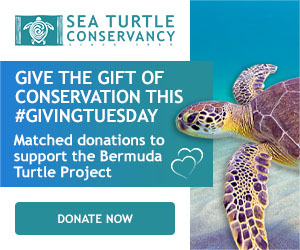 Sea Turtle Conservancy (STC) is hoping all of its supporters will participate in this year’s Giving Tuesday Campaign, which seeks to raise funds to support a health assessment of Bermuda’s sea turtles. Though not as well-known as Black Friday or Cyber Monday, Giving Tuesday, which occurs the Tuesday after Thanksgiving (November 30 this year), is one day when everyone can join together to make a huge difference.
Sea Turtle Conservancy (STC) is hoping all of its supporters will participate in this year’s Giving Tuesday Campaign, which seeks to raise funds to support a health assessment of Bermuda’s sea turtles. Though not as well-known as Black Friday or Cyber Monday, Giving Tuesday, which occurs the Tuesday after Thanksgiving (November 30 this year), is one day when everyone can join together to make a huge difference.
For Giving Tuesday last year, STC supporters raised more than $50,000 for STC’s In-water Research Project in the Gulf of Mexico. STC has set its sights even higher this year, and we are confident we can reach our goal of $70,000 for Bermuda’s sea turtles thanks to generous pledges from STC’s Board of Directors to match every dollar donated up to $35,000!
Through the Bermuda Turtle Project (BTP), for over 50 years Sea Turtle Conservancy and its partners in Bermuda have been monitoring juvenile sea turtles in their marine environment to track how these animals are doing at a critical life stage. The BTP is unique because it allows for the study of sea turtles in their developmental habitat – a place where young sea turtles from around the Atlantic and Caribbean congregate to grow up.
Over the last several years, the BTP has observed an ecological calamity unfolding in Bermuda that has resulted in a massive die-off of seagrasses—the main food source for juvenile green turtles. As a result, sea turtles are disappearing from Bermuda at an alarming pace, and many of those remaining appear to be in very poor health. Expanded research and conservation efforts are needed urgently to fully understand and respond to the complicated factors at work. The ecological changes in Bermuda almost certainly can be traced to water quality degradation associated with nutrient runoff from the island, combined with rising ocean temperatures and disturbance by human activities.
Through this year’s Giving Tuesday campaign, STC is raising funding to support a health assessment of Bermuda’s sea turtles, which will include a comparison with healthy turtle populations in Florida. This baseline information will allow us to better understand how the seagrass die-off is impacting Bermuda’s turtles so we can best address this problem in Bermuda. STC also needs funding to conduct vessel-based surveys around Bermuda to identify new areas where the turtles may be congregating in search of suitable food sources.
Finally, STC will use funding from Giving Tuesday to expand public awareness about the ways human activities—even in a place as remote and seemingly pristine as Bermuda—can threaten sea turtles and the entire marine ecosystem. The calamity unfolding in Bermuda has STC’s full attention, and we need our supporters to contribute this Giving Tuesday.
Help support STC’s Bermuda Turtle Project by donating to the cause in one of three ways:
1. Online at conserveturtles.org/GivingTuesday or facebook.com/conserveturtles
2. Call 352-373-6441 with your credit card info
3. Mail a check with “Giving Tuesday” in the subject line. All checks received with “Giving Tuesday” in the subject line will count towards the campaign, even if received after November 30.
Can we count you in for Giving Tuesday?
Introducing the winning photos from our 2022 Sea Turtle Calendar Contest! Thank you so much to everyone who entered this year’s contest. It gets harder every year to narrow down hundreds of beautiful images to only 13 photos! Calendars will be for sale in our online gift shop in later November or early December. We will post the link once they’re live!
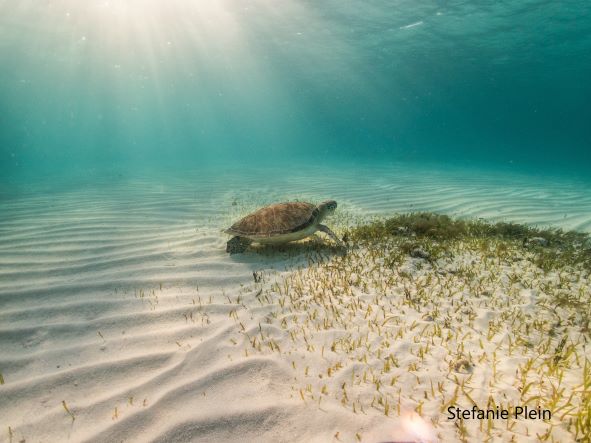
COVER PHOTO – STEFANIE PLEIN
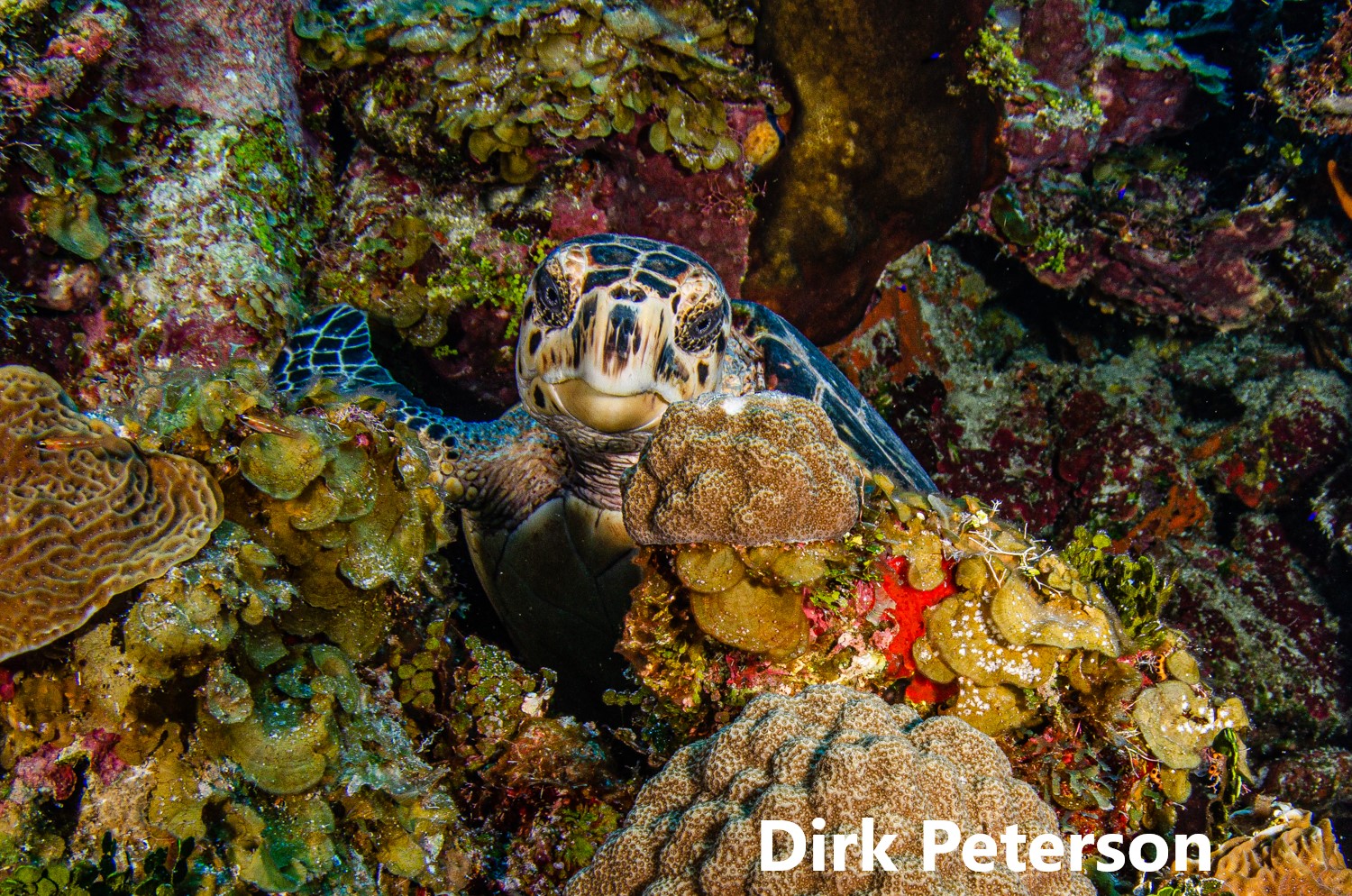
JANUARY – DIRK PETERSON
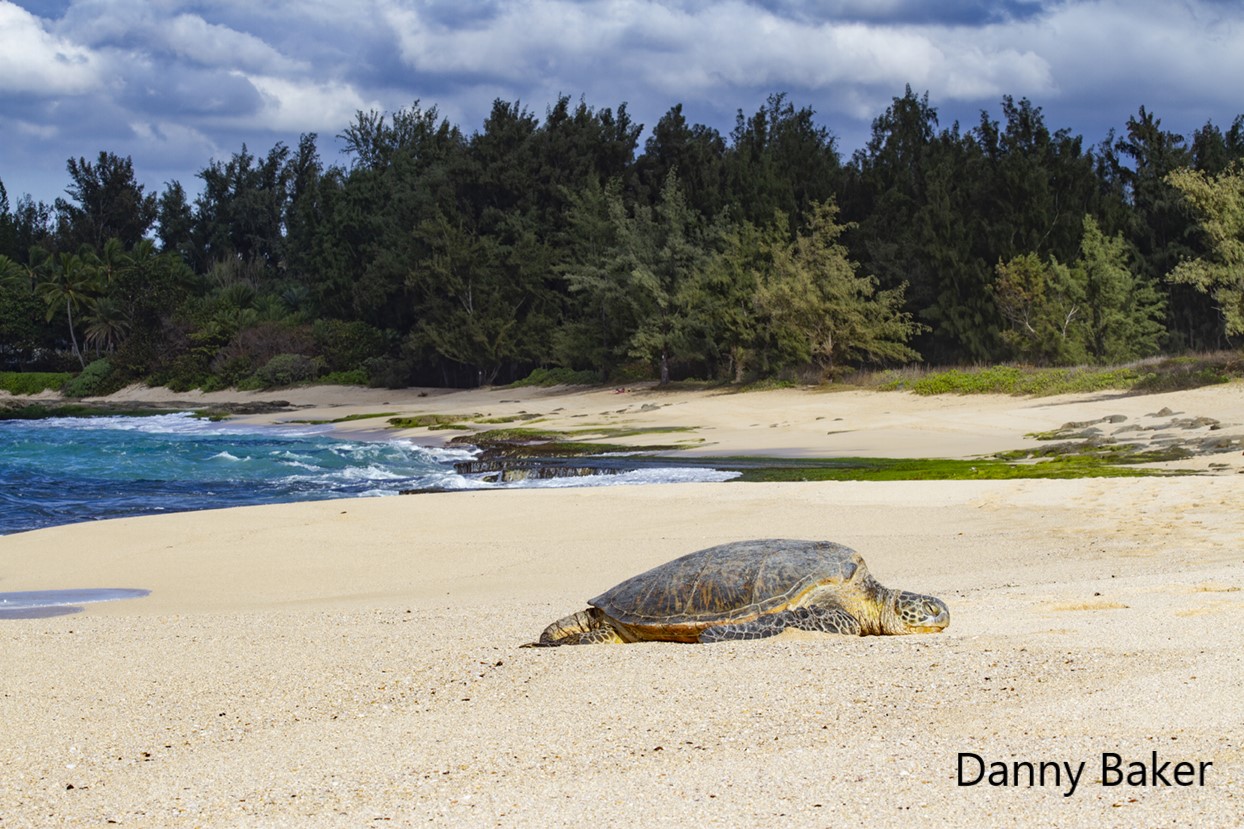
FEBRUARY – DANNY BAKER
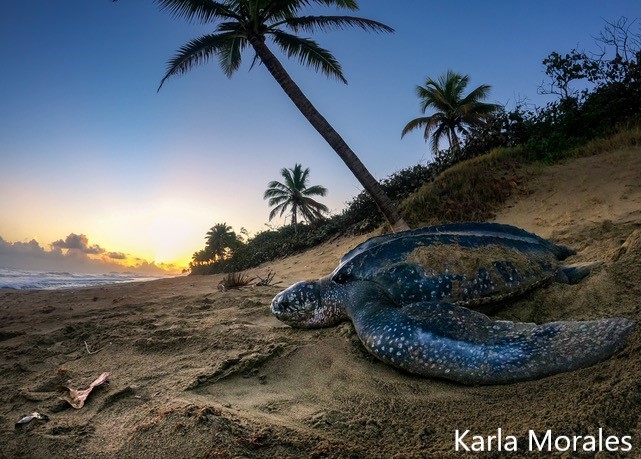
MARCH – KARLA MORALES
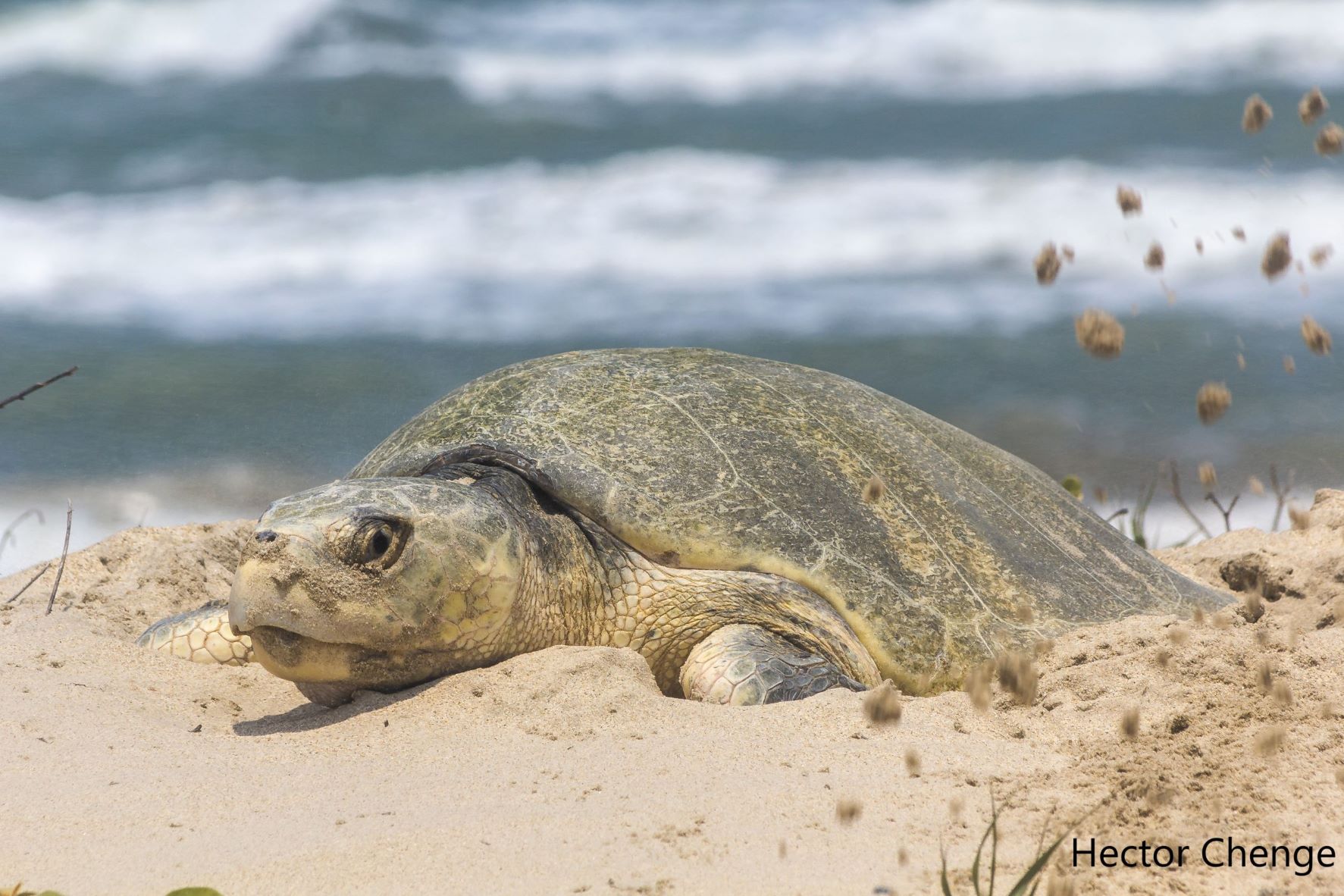
APRIL – HECTOR CHENGE
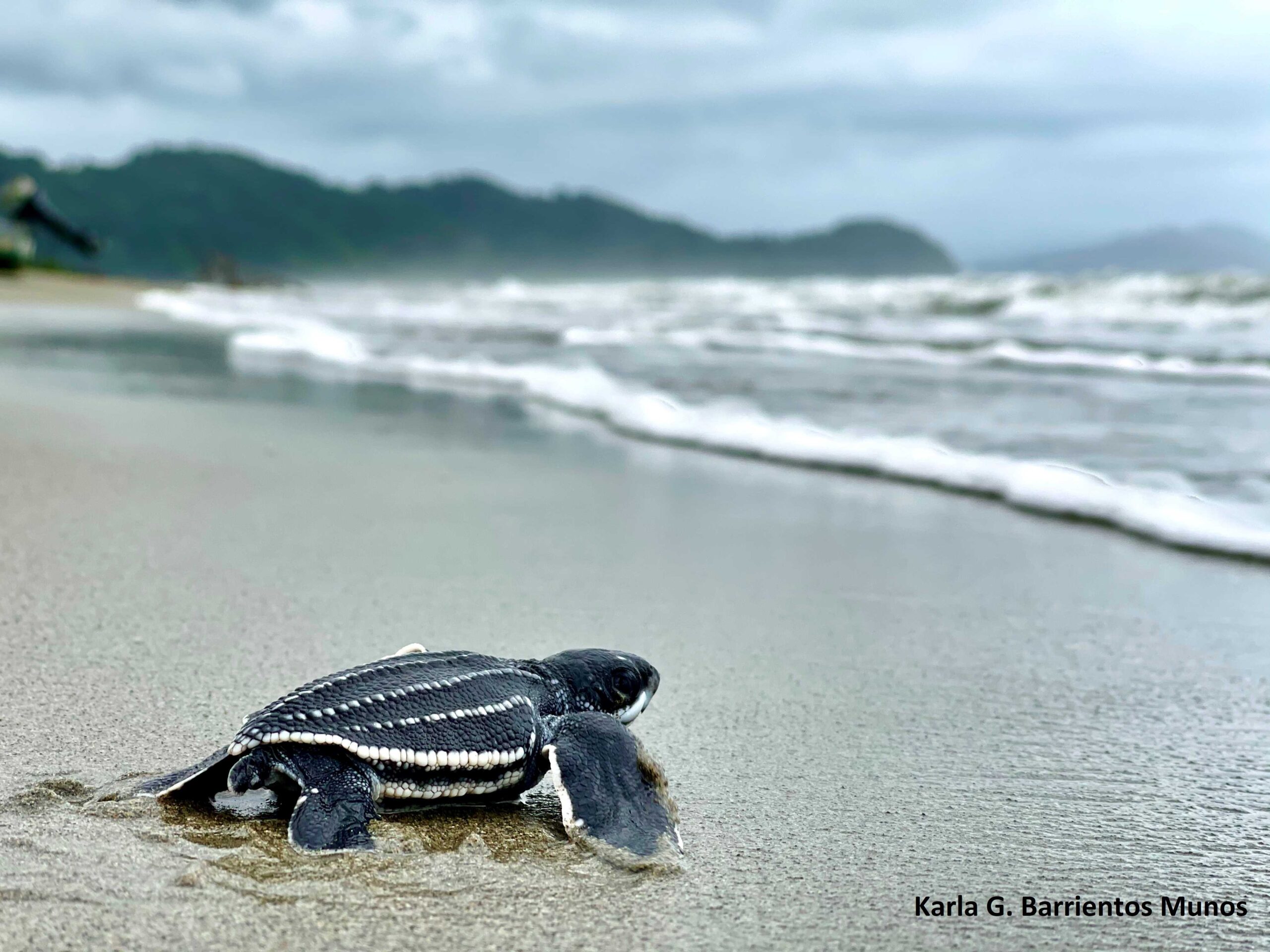
MAY – KARLA G. BARRIENTOS-MUNOS
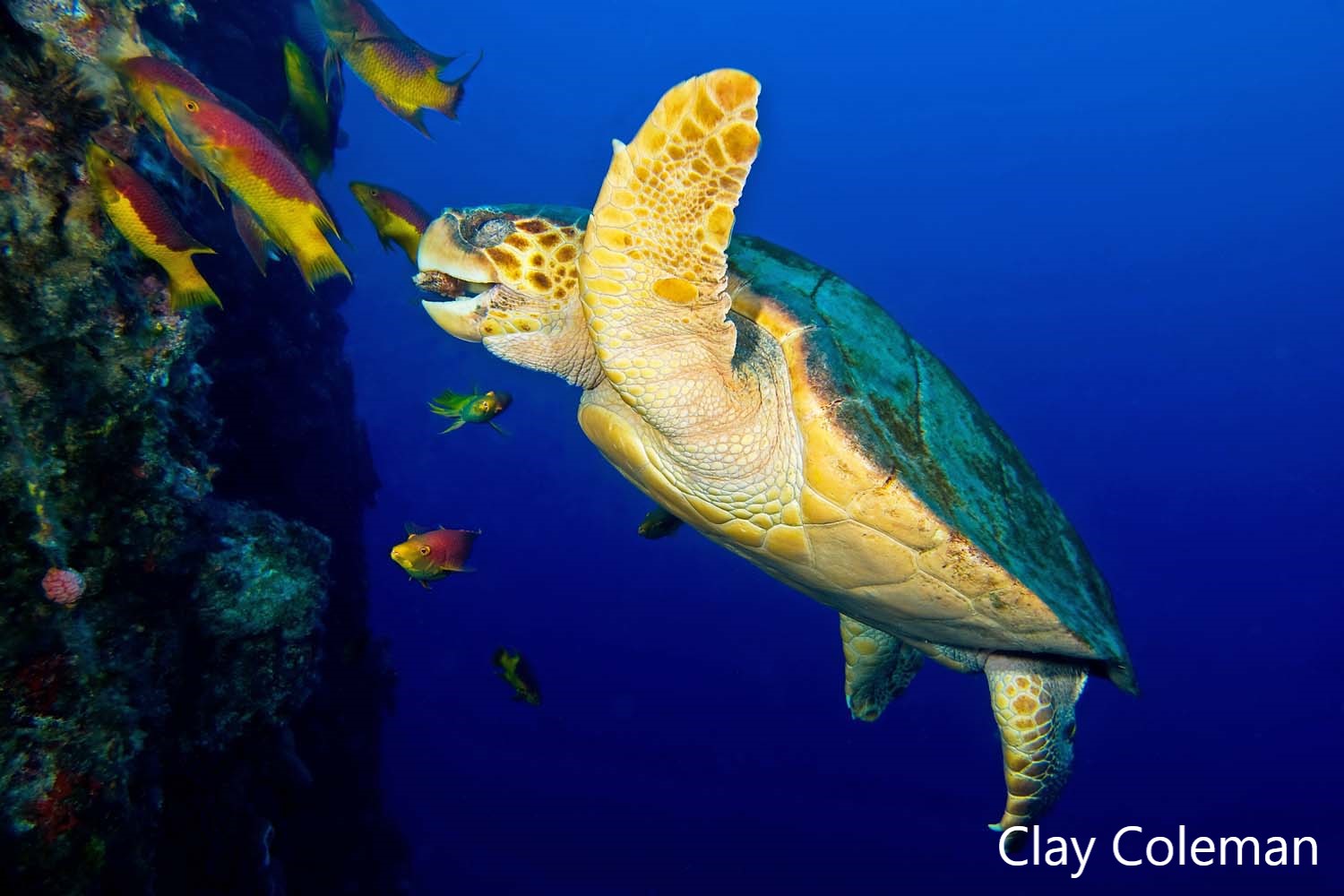
JUNE – CLAY COLEMAN
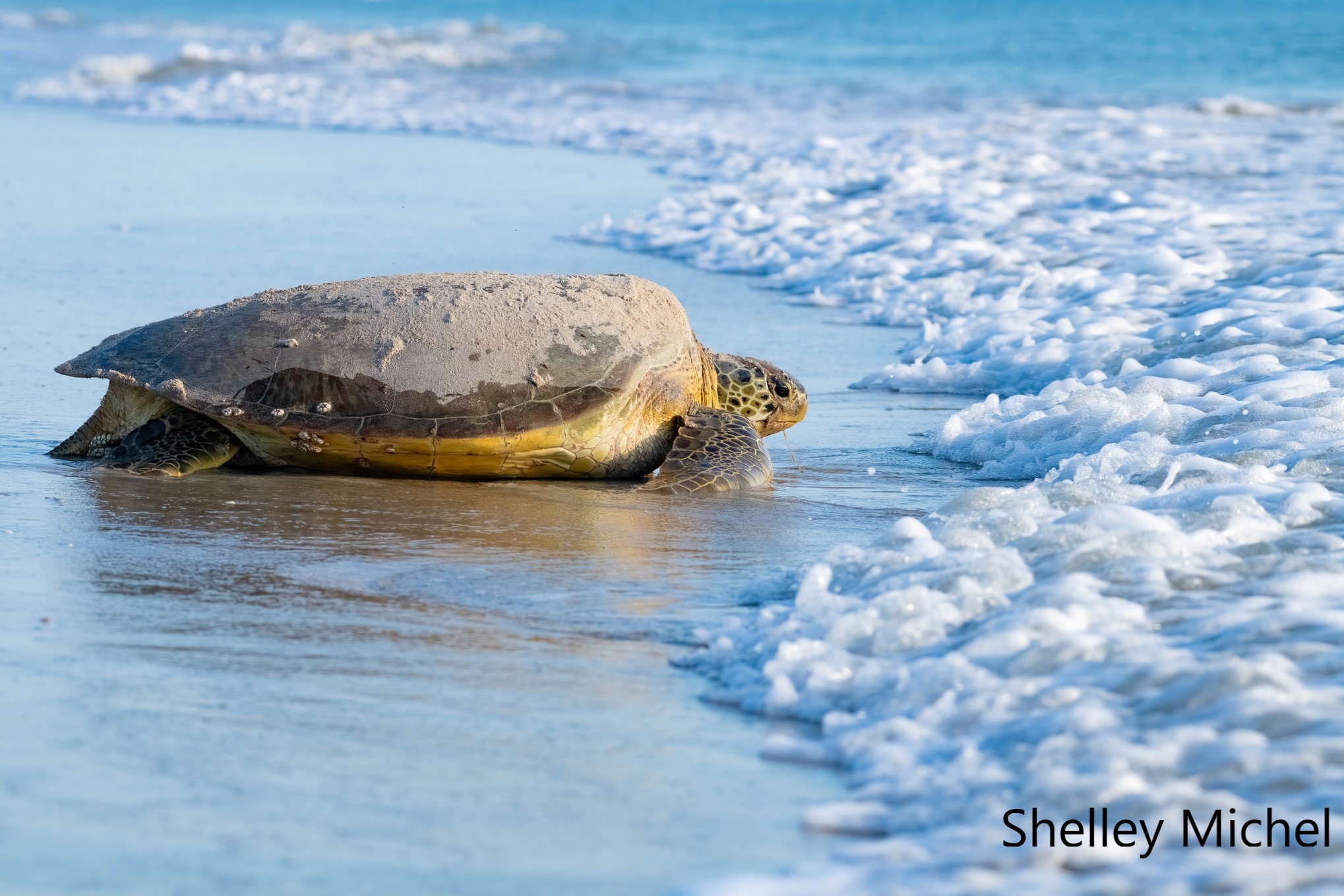
JULY – SHELLEY MICHEL
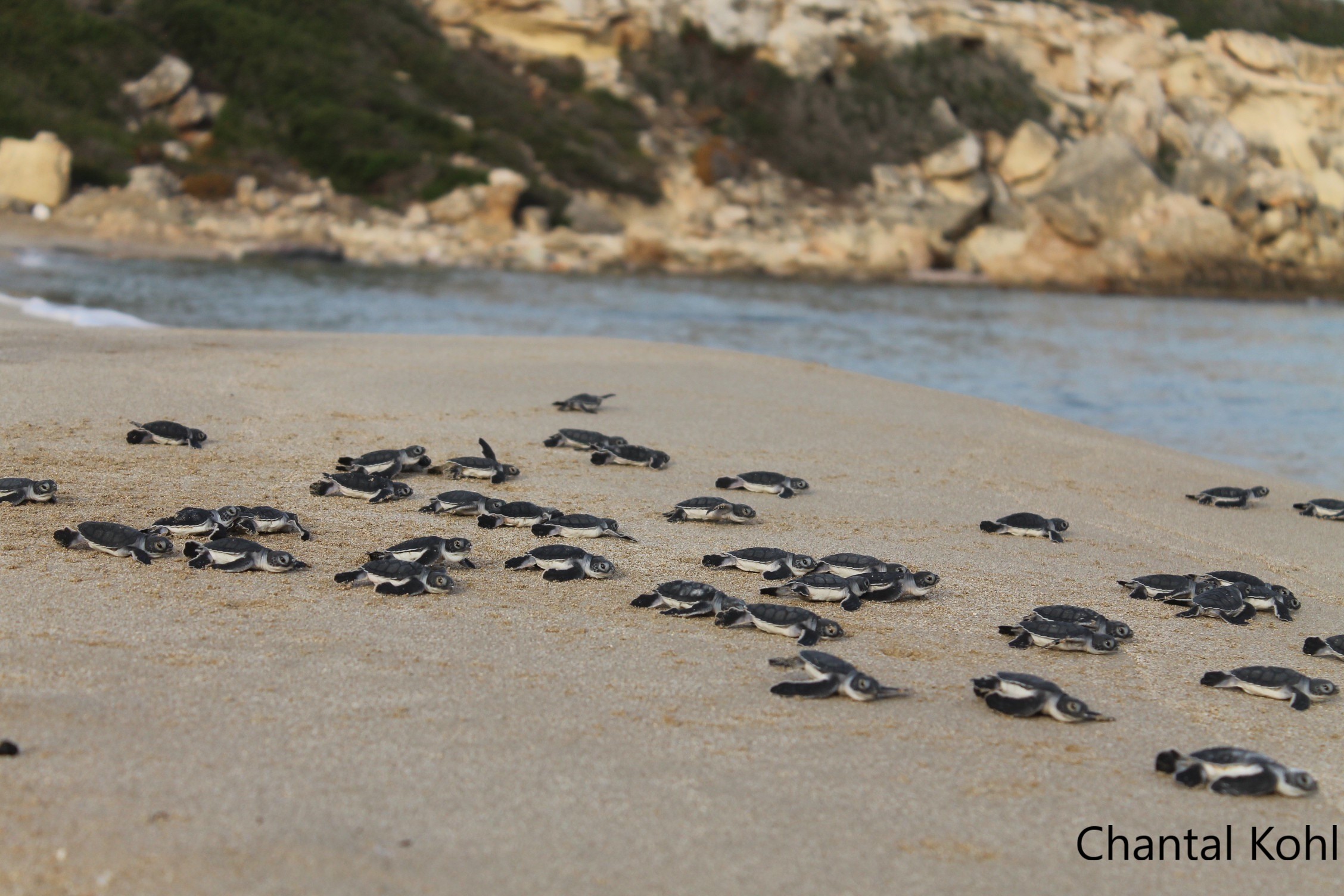
AUGUST – CHANTAL KOHL
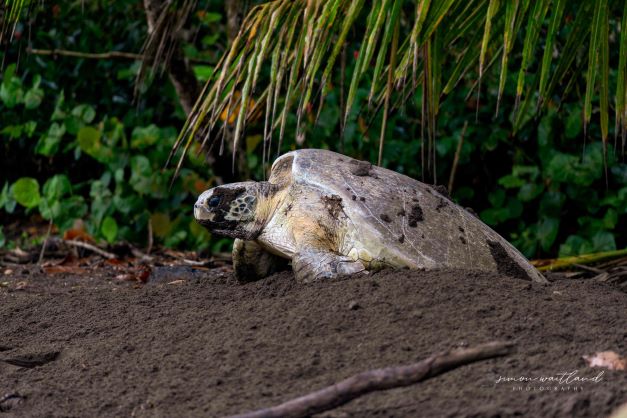
SEPTEMBER – SIMON WAITLAND
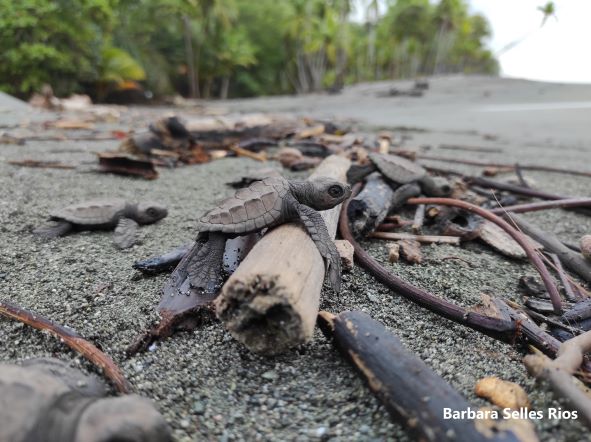
OCTOBER – BARBARA SELLES RIOS
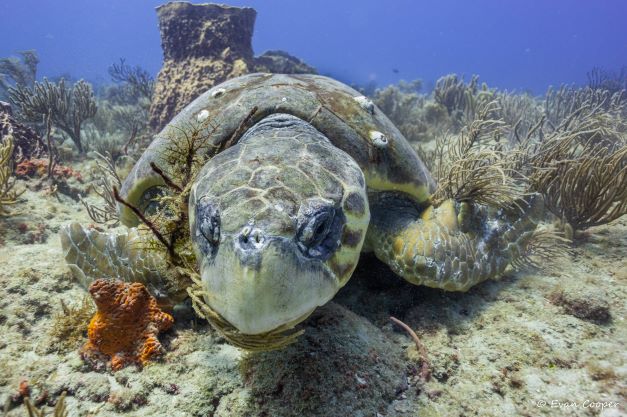
NOVEMBER – EVAN COOPER
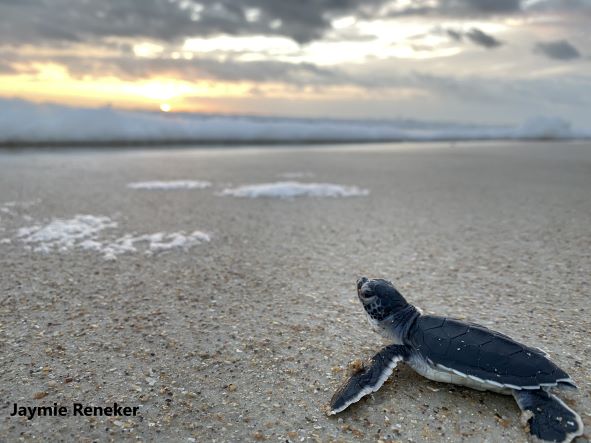
DECEMBER – JAYMIE RENEKER